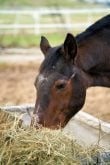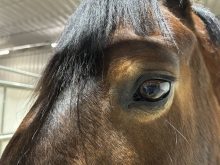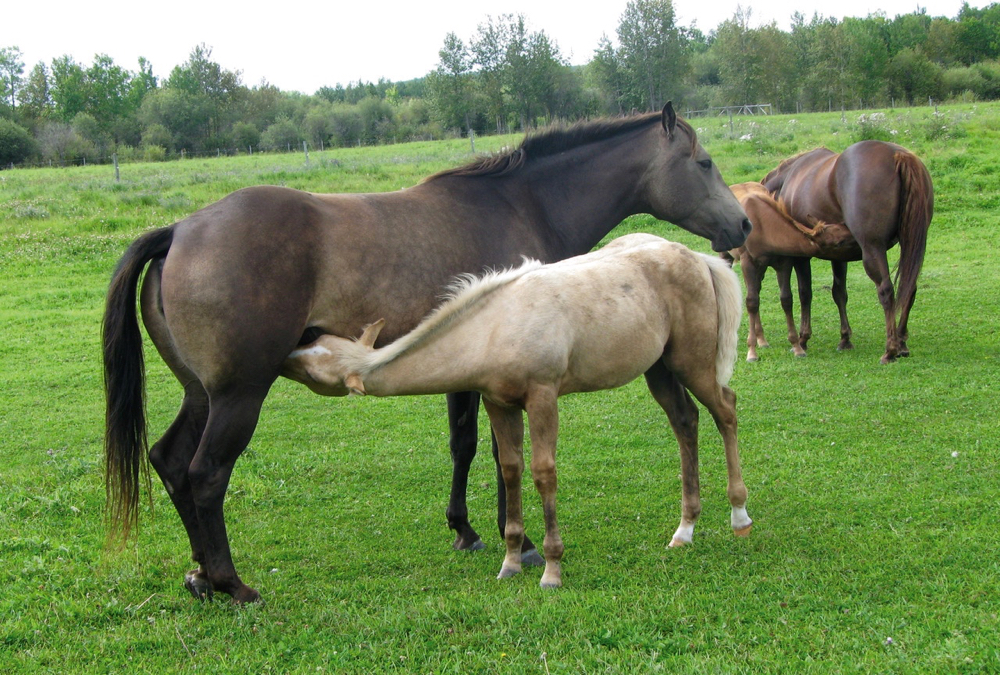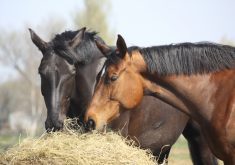Any time undesirable behaviour or resistance arises in the horse it demands a unique type of ‘listening’ to identify what the horse is attempting to convey.
Horses are transparent in their behaviours and often act in an attempt to simply feel better and seek relief from discomfort. Identifying the root cause of the discomfort can be challenging yet its identity is necessary for true and complete remedy of the unwanted behaviour.
Horses use behaviour and body language to communicate with one another and they also use behaviour and body language to communicate with their human companions. Most horse owners would agree with this, however, the interpretation and meanings of the various behaviours are often far from straightforward. Unwanted behaviours can be perplexing to unravel and can quickly escalate into a potentially dangerous outcome when the badly behaved is a 1,000-pound animal.
Read Also

Horns aren’t unlocking anytime soon on livestock transport standards
Standards good enough meet the definition of “humane” animal transportation still vary widely between what what industry wants, what animal rights advocates want and, between the two, what federal regulators decide is good enough.
Soundness is the first question whenever undesirable behaviour surfaces. Just like in humans, a sore tooth, an achy back, a hurting foot all have the ability to derail the good nature of anyone — horse or human. Horses have many ways of showing us that they are in pain or uncomfortable and these ways are invariably labelled as undesirable.
Behaviours such as ear pinning, tail swishing and wringing, and girthiness are often discounted and labelled incorrectly. Anthropomorphic labellings — such as ‘bad attitude,’ moody, b*tchy, grumpy, argumentative, bad tempered or resistant — ignore the valuable feedback loop of information coming from the horse.
Generally, undesirable behaviours such as these start out seemingly small and insignificant. However, if the smaller nuance in behaviour is missed or overlooked the horse is compelled to amplify the volume. Jigging, bucking, rearing, spooking or shying, kicking out, bolting and so forth, are behaviours that rarely ‘just come out of the blue.’ Rather they tend to be the outcome of momentum and discomfort as indicated by the horse for quite some time — acknowledged or not.
It may be necessary to enlist the services of a veterinarian to perform a comprehensive assessment of the horse which includes, but is not limited to, dental, hoof, digestive, and spinal and limb health. Tack fit needs to be thoroughly evaluated. Tack fit is extremely important and the horse will show aversion to being tacked up or being ridden if the saddle is ill fitting.
Pain often creates avoidance behaviours in horses. For example, a horse may show reluctance to being caught, handled or tacked up and become reactive, fidgety, ‘cinchy’ or ‘cold-backed’ when the girth is tightened. The horse may resist remaining still while being mounted, walk forward with a hurry (a hurried walk is a worried walk), show a distressed facial expression or dissociate — all indicators that the horse is either already in pain or expects pain when being ridden.
Unbalanced riders will cause a horse to set up painful compensation patterns to offset their rider’s imbalance. These compensation patterns are extremely strenuous for the horse’s body and may cause restriction of forward movement, pain and associated behaviours. When an ill-fitting saddle and a poor rider come together the problem is further amplified.
If the veterinarian isn’t able to identify a source of pain, it remains humbling to say that, that still does not mean there is ‘no’ pain. However, after this point of due diligence it becomes prudent to explore other options for the misbehaviour.
For the sake of completeness it is important to consider deficits in the training program. Improper training methods are invariably associated with mental discomfort, confusion and frustration for the horse. Horses that submit to poor schooling techniques collect residual tensions in their bodies. Over time these residual tensions and stresses accumulate in the body and are a prelude to unsoundnesses — mentally and physically.
The unsound behaviour is how the horse ‘copes’ with the stress and uncomfortable situation. Punishing avoidance and undesirable behaviours in the horse may momentarily silence the messenger, however, the message still remains. Something is not quite right.
Then there is more. In addition to pain and incomplete training contributing to unwanted behaviours, the roots of behavioural issues can also be seen as a consequence when horses live in social isolation or for horses whose basic needs for foraging and sufficient movement are not satisfied.
Improper diets and dietary practices upset digestive health. Gastric ulcers and hindgut acidosis are very common in horses and horses with these conditions just don’t feel good. This discomfort may be expressed as a sour attitude, an unwillingness to work and even as an unsound gait. No amount of behavioural correction will override a painful belly when what is needed is correction of the diet or dietary practices.
Identifying the driving forces behind a horse’s unfavourable behaviour is challenging — nonetheless it is important work.
It has been my experience that underlying almost every undesirable behaviour is a reasonable and practical explanation. Horses are sensible and willing creatures. Whenever a horse is non-compliant in the slightest of ways, there is a reason, even though its conveyance may not be clear.
It is our job as an advocate for the horse to refine our own ‘listening’ skills.
















